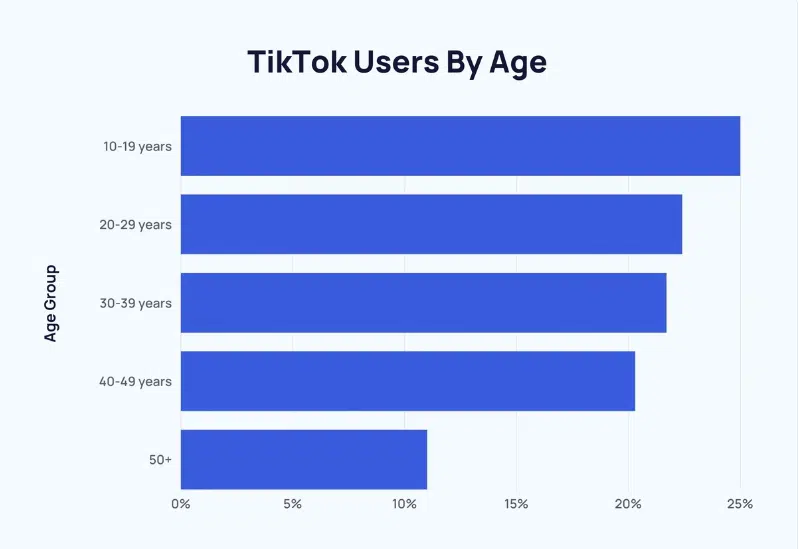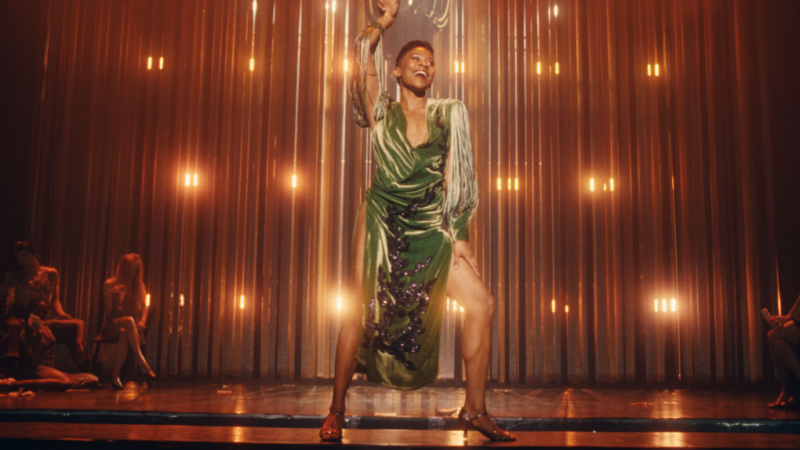TikTok’s growth in popularity
In recent years, TikTok has emerged as one of the fastest-growing social media platforms, with over a billion active users worldwide. Organisations and creatives are increasingly using TikTok to promote their events and exhibitions, as well as using it to build a brand and engage with new audiences. We asked social media expert Amrit Singh to take a look at what potential users should think about if considering the platform within a social media strategy.
The stats
Before diving into TikTok, it’s important to consider a few key factors.
According to statistics, 25% of TikTok users are between 10 and 19 years old. Meanwhile, people in the 20-29 age groups make up 22.4% of the platform’s user base. And 30-39-year-olds make up 21.7% of the total TikTok audience.
Additionally, you can find 20.3% of users between 40 and 49 years old. People over the age of 50 make up the remaining 11%. You might be surprised to learn that TikTok’s audience is much broader than you imagined. If your assumptions about the platform’s demographic have been keeping you away, these numbers prove otherwise.

Brand building vs ticket sales
Firstly, it’s important to recognise the difference between building a brand and driving ticket sales. While TikTok can certainly help to boost ticket sales, it’s not primarily a sales platform. Rather, it’s a place to build brand awareness and showcase creativity. Arts and cultural organisations and individuals should focus on creating engaging, entertaining, and informative content that showcases brand values and artistic vision, rather than simply trying to sell tickets.
Secondly, creative organisations and individuals should consider the unique creative opportunities that TikTok presents. The platform is highly visual, and users are hungry for fresh and engaging content. TikTok can be used to showcase performances, behind the scenes preparations, exhibitions and events in innovative and creative ways, using features such as filters, effects, and transitions. Users can also collaborate with TikTok creators to bring fresh perspectives and new audiences to their work.
Thirdly, it’s important to think about how TikTok fits into an overall marketing strategy. While it’s tempting to jump on the latest trend, it’s essential to ensure that TikTok aligns with an any wider marketing goals and target audience. Potential users should consider how TikTok fits into their overall digital strategy, and how it can complement other social media platforms, such as Instagram or Twitter.

Consistency is key
Finally, it’s important to consider the potential downsides of using TikTok. While the platform can be a valuable tool for reaching new audiences, it’s not without its risks. For example, TikTok’s algorithm can be unpredictable, and it’s essential to ensure that content is appropriate and in line with your values and messaging. Additionally, TikTok’s fast-paced and ever-changing nature can be challenging to keep up with, and it’s essential to ensure that resources are in place to manage and maintain a consistent presence on the platform.
Approach it strategically
TikTok can be a valuable tool if you are looking to build a brand, showcase creativity, and engage with new audiences. However, it’s essential to approach the platform strategically, focusing on building a brand rather than driving ticket sales, consider the unique creative opportunities it presents, ensure that it aligns with an overall marketing strategy, and being aware of the potential risks and downsides. By considering these factors, TikTok can be a useful tool to showcase work, reach new audiences, and build your brand in innovative and engaging ways.
How useful was this resource?




